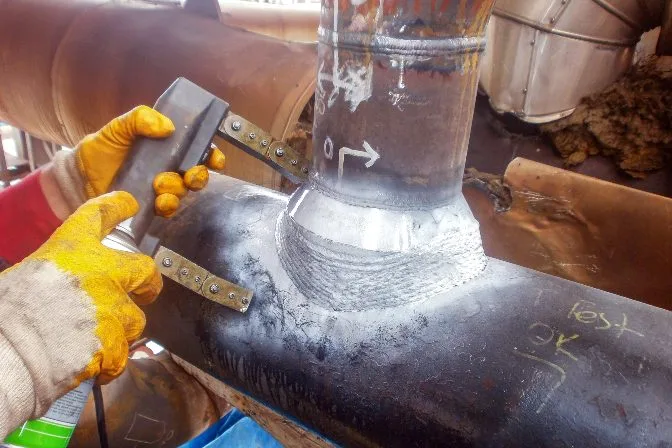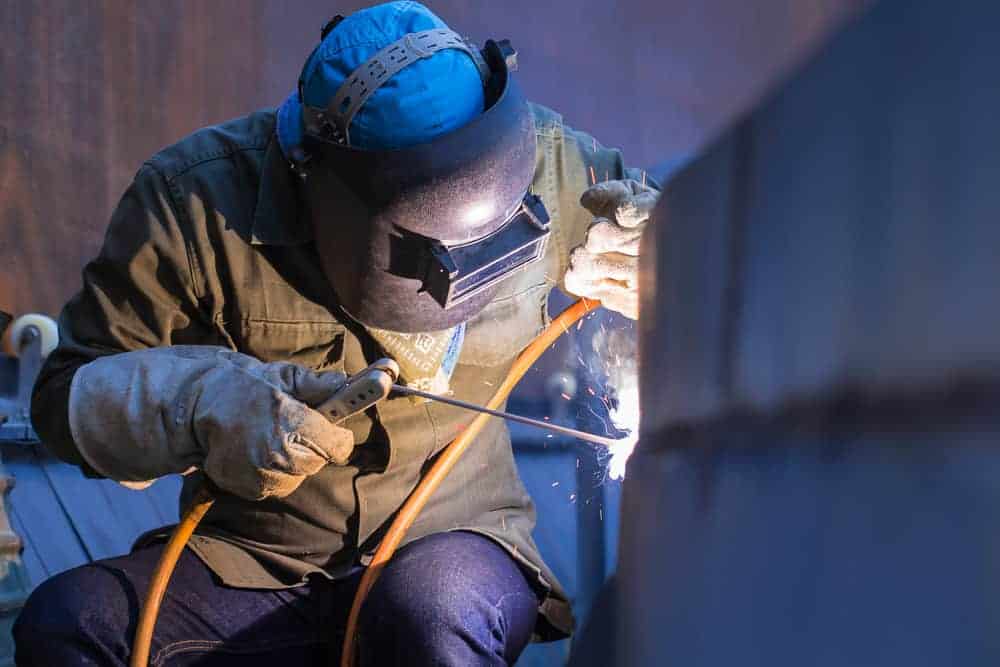Specialist Houston Welding Inspection to Fulfill Industry Regulations
Specialist Houston Welding Inspection to Fulfill Industry Regulations
Blog Article
Exactly How Welding Evaluation Functions: A Comprehensive Evaluation of Methods, Standard, and the Function of Inspectors in Making Sure Structural Honesty and Safety And Security
Welding inspection is an essential part in the construction and manufacturing markets, where the stability of bonded joints is critical to safety and security and reliability. Numerous approaches, consisting of non-destructive and visual testing methods, are utilized to identify prospective imperfections that might jeopardize structural efficiency - Houston Welding Inspection. Inspectors are tasked with not only examining weld top quality versus strict standards yet likewise interpreting complex codes and standards. As we discover the ins and outs of this career, the challenges faced by examiners in maintaining security and conformity will certainly reveal a deeper understanding of their vital role in securing framework.
Significance of Welding Assessment
Welding examination is crucial in guaranteeing the honesty and security of welded frameworks, with researches showing that approximately 70% of structural failings can be mapped back to inadequate welding practices. This emphasizes the importance of organized evaluation processes throughout the welding lifecycle, from preparation to conclusion. Reliable assessment not just recognizes flaws before they intensify right into substantial problems but also guarantees compliance with industry standards and regulations.

The role of welding inspectors extends past simple high quality control; they are crucial in securing public security and minimizing responsibility for organizations. By carrying out strenuous inspection protocols, companies can detect troubles such as insufficient fusion, splits, or too much porosity, which can compromise the total stamina of a welded joint. Ongoing training and qualification of examiners add to the total high quality guarantee in welding operations, cultivating a culture of safety and security and excellence.
In enhancement, welding inspection plays an essential role in preserving operational effectiveness. Determining issues early at the same time promotes prompt restorative actions, reducing expensive rework and project hold-ups. Inevitably, a durable examination framework works as a structure for sturdy and reliable welded structures, guaranteeing they fulfill both practical and security requirements.
Common Assessment Approaches
Exactly how can one make sure the quality of welded joints throughout the assessment procedure? The implementation of different assessment techniques is crucial in evaluating weld integrity and identifying possible flaws. Typical methods consist of Visual Assessment (VT), which is commonly the first line of protection, allowing assessors to discover surface area imperfections such as fractures, porosity, or insufficient combination by aesthetically assessing the welds.
Ultrasonic Checking (UT) is another commonly utilized strategy, using high-frequency acoustic waves to determine internal issues within the weld. This method is especially efficient for spotting issues that are not visible to the naked eye. Radiographic Evaluating (RT) uses X-rays or gamma rays to produce photos of the weld, enabling the identification of volumetric defects, such as incorporations or spaces.
Magnetic Bit Evaluating (MT) and Liquid Penetrant Checking (PT) are additionally noticeable approaches, concentrating on surface problems. MT counts on magnetic fields to disclose surface and near-surface interruptions, while PT includes using a liquid color to highlight defects. Each of these methods serves a distinct function, guaranteeing the detailed evaluation of welded joints and securing architectural honesty and safety.
Requirements for Examining Welds
The analysis of welds is guided by a set of recognized requirements that make sure both capability and safety and security in bonded frameworks. These standards encompass various factors, including weld size, profile, and infiltration, which must adapt specified standards. read here Compliance with industry codes, such as those established by the American Welding Culture (AWS) or the American Culture of Mechanical Engineers (ASME), is necessary in figuring out the reputation of a weld.

Weld metallurgy plays a vital role; the examination considers the combination top quality between base and filler products, along with heat-affected zones. The overall mechanical residential properties, consisting of tensile strength and ductility, should satisfy the needs developed for the specific application. Collectively, these requirements make sure that welds not just meet aesthetic standards however likewise do accurately under functional problems.
Role of Welding Inspectors
A welding inspector's competence is crucial in ensuring the integrity and quality of welded structures. These professionals play an important function in the construction and building process by confirming that welding operations abide by established standards and specifications. Their responsibilities incorporate a comprehensive array of jobs, consisting of visual evaluation of welds, evaluating welding documentation, and conducting non-destructive screening (NDT) approaches such as radiographic or ultrasonic screening to recognize flaws.
Welding examiners are also in charge of analyzing welding codes and requirements, guaranteeing that the welders are qualified which the materials used satisfy the required requirements - Houston Welding Inspection. They have to preserve meticulous documents of evaluations, which function as documents of compliance and top quality assurance. Furthermore, these assessors typically collaborate with designers and project supervisors to address any kind of issues that emerge during the welding procedure, providing referrals for corrective activities when essential.
Along with technological skills, efficient interaction is important, as welding examiners have to convey findings plainly to stakeholders and promote training and guidance for welders. Eventually, their duty is indispensable to maintaining security and dependability in bonded frameworks, adding considerably to the general success of building tasks.

Challenges in Welding Inspection
What obstacles do welding assessors encounter in their important function? The complexities of modern welding strategies and products present significant obstacles for examiners charged with ensuring conformity with safety requirements and architectural honesty. One primary obstacle is the quick innovation of welding modern technology; examiners must consistently upgrade their knowledge and abilities to stay reliable. This continuous education is vital to recognizing new products and processes, which can differ widely in features and demands.
In addition, inspectors typically encounter variations in worksite problems that can prevent examination procedures. Factors such as environmental problems, accessibility, and the physical state of the welded structures can make complex thorough assessments. Time restraints enforced by task schedules can even more push assessors, possibly affecting the thoroughness of their assessments.
Additionally, the subjective nature of some examination approaches can lead to disparities in examinations. Aesthetic examinations might differ based on the assessor's experience and viewpoint. To minimize these obstacles, the fostering visit the website of innovative non-destructive screening methods and standardized procedures becomes essential - Houston Welding Inspection. Ultimately, conquering these obstacles is important for making sure the safety and security and reliability of bonded structures throughout numerous sectors.
Verdict
Welding assessment is vital for maintaining architectural stability and safety in numerous industries. Via the application of diverse inspection techniques and adherence to recognized standards, assessors play a critical role in guaranteeing and recognizing flaws conformity with market criteria. The challenges encountered in this field highlight the requirement for continual enhancement in examination techniques and methods. Ultimately, efficient welding inspection contributes substantially to mitigating risks and improving the total reliability of welded structures.
Welding examination is an important element in the building and production sectors, where the honesty of bonded joints is extremely important to safety and reliability.Welding inspection is important in making sure the stability and security of welded structures, with research studies indicating that up to 70% of structural failures can be traced back to inadequate welding practices. Their responsibilities encompass a detailed variety of tasks, including visual examination of welds, assessing welding documents, and performing non-destructive screening (NDT) techniques such as ultrasonic or radiographic testing to recognize issues.
Welding examiners are likewise responsible for analyzing welding codes and requirements, guaranteeing that the welders are qualified and that the products utilized meet the necessary needs. Eventually, effective welding examination contributes significantly to mitigating threats and improving the overall integrity of welded frameworks.
Report this page